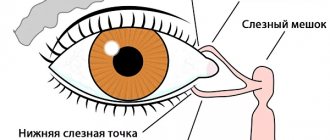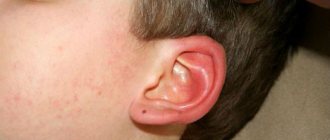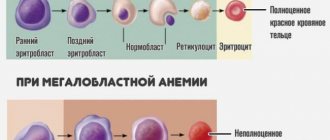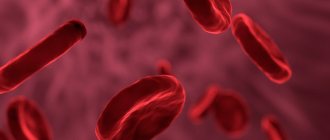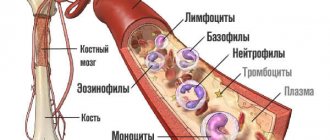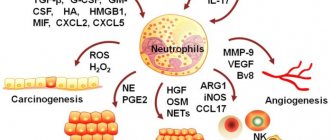Color of discharge during menstruation: what to look for
The content of the article
The color of menstrual flow, when critical days arrive in a timely manner, can be different - from scarlet to black. Many factors influence the color change, as well as the thickness of the blood:
- medications taken during menstruation;
- diseases arising in this cycle;
- physical activity during the period;
- volume of discharge - the more blood, the brighter it will be and the fewer clots there will be;
- amount of fluid - the more it is, the lighter and thinner the blood.
Taking medication
Physical activity
Changes in the color and density of menstrual blood do not necessarily indicate a disorder, and it is difficult to make a diagnosis based on this symptom alone. Gynecologists agree that changes in the duration of menstruation, their irregularity or intensity are more important than the color of the blood during the period.
However, scientists from the American College of Obstetricians and Gynecologists published a report recommending that changes in menstrual blood be assessed as a significant symptom of disease. At the same time, they recommend measuring blood pressure and body temperature.
According to experts, the color of menstrual blood indicates the hormonal background, which affects the functioning of the entire body.
Compound
Blood is a rapidly renewing connective tissue that continuously circulates throughout the human body.
It was possible to find out what gives the red color, but its elements turn out to be no less interesting. What elements give it this color is an equally interesting aspect.
Blood contains:
- Plasma. The liquid is light yellow in color, with its help the cells in its composition can move. It is composed of 90 percent water, with the remaining 10 percent made up of organic and inorganic components. Plasma also contains vitamins and microelements. The light yellow liquid contains many beneficial substances.
- Formed elements of blood cells. There are three types of cells: white blood cells, platelets and red blood cells. Each type of cell has certain functions and characteristics.
Leukocytes
These are white cells that protect the human body. They protect it from internal diseases and foreign microorganisms penetrating from the outside.
Leukocytes
This is a white element in color. Its white tint cannot be ignored during laboratory tests, so such cells are identified quite simply.
White blood cells recognize foreign cells that can cause harm and destroy them.
Platelets
These are very small colored plates whose main function is coagulation.
Platelets
These cells are responsible for ensuring that the blood:
- It coagulated and did not flow out of the body,
- Coagulates quite quickly on the surface of the wound.
Red blood cells
More than 90 percent of these cells are in the blood. It is also red because red blood cells have this hue.
Red blood cells
They carry oxygen from the lungs to peripheral tissues and are continuously produced in the bone marrow. They live for about four months, then are destroyed in the liver and spleen.
It is very important for red blood cells to carry oxygen to various tissues of the human body.
Few people know that immature red blood cells are blue, then acquire a gray tint and only then turn red.
There are quite a lot of human red blood cells, which is why oxygen reaches peripheral tissues so quickly.
It is difficult to say which element is more significant. Each of them has an important function that affects human health.
Pink blood during menstruation
Pink blood during your period can mean low estrogen levels. Estrogens are the main female hormones and are produced by the ovaries. Their concentration increases in the first phase of the cycle.
When there is not enough estrogen, problems with menstruation arise - cycles become irregular. A lack of these hormones can also create problems with pregnancy.
Low estrogen levels can be caused by intense physical stress. Research has shown that vigorous exercise can lower these hormones, which can sometimes lead to menstrual irregularities, including missed periods.
General manifestations of anemia
The clinical manifestations of all anemias are similar. The main function of hemoglobin is to carry out gas exchange by transporting oxygen from the lungs to organs and tissues and carbon dioxide to the lungs. Thus, with a lack of hemoglobin, almost all organs experience a lack of oxygen, which is manifested by general weakness, fatigue, and poor tolerance to physical activity. Patients complain of a desire to lie down and rest. This is explained by the fact that the heart and skeletal muscles experience constant hypoxia, which, with long-term anemia, can lead to dystrophic changes. There are complaints associated with a lack of cerebral circulation - darkening of the eyes, tinnitus, dizziness, semi-consciousness, fainting. Brain phenomena are especially characteristic of elderly and senile patients, and sometimes there is also a decrease in memory and intelligence. Other manifestations of anemia include shortness of breath and palpitations during exercise, and in severe cases, at rest.
With almost all anemia, a decrease in appetite may be observed, this is especially typical for elderly patients suffering from B12-deficiency anemia. However, sometimes (especially with iron deficiency) the opposite situation is possible, when a person complains of an indomitable appetite, a lack of feeling of fullness after eating (this can be regarded as a defensive reaction of the body, which is trying to compensate for the lack of a specific substance with the amount of food).
Externally, patients with anemia are noticeable by pallor, the severity of which depends on the level of hemoglobin. The skin may have a “waxy” tint in case of B12-deficiency anemia, icteric in case of hemolytic anemia, grayish-sallow in case of chronic lead poisoning. Often, especially in women and older people, with anemia there is slight swelling of the legs. Often, multiple hemorrhages can be detected on the skin, both small, pinpoint (“stars”) and large (“bruises”). They may indicate a decrease in the number of platelets (with aplastic anemia, for example) or an increase in the fragility of blood vessels (scurvy). Sometimes such hemorrhages themselves can cause anemia.
It should be noted that there is no direct correlation between the level of hemoglobin and the severity of the condition. Even severe anemia is tolerated quite easily if hemoglobin decreases gradually over a long period of time. There are cases when people retained working capacity with a hemoglobin of 40 g/l and the ability to self-care with a hemoglobin of 20 g/l. At the same time, with acute blood loss, a severe, sometimes threatening condition can occur even with a hemoglobin of 80 g/l. Women tolerate anemia much better than men.
According to the mechanism of development of the disease, there are 3 types of anemia - posthemorrhagic iron deficiency (after blood loss, acute or chronic), associated with the actual disorder of hematopoiesis (B12 deficiency, folate deficiency, aplastic) and associated with accelerated destruction of red blood cells (hemolytic). In many cases, a combination of several mechanisms occurs. For example, anemia in severe infectious diseases is associated with both toxic bone marrow suppression and increased consumption of iron, necessary for immune reactions.
Bright red menstrual blood
If the blood during this period is bright red, similar in color to cranberries, this is a sign that everything is in order. It is very good if menstruation is also regular.
Of course, monthly bleeding looks and feels different for every woman, but in general: a bright red period is a signal that there is no reason to worry.
ONLINE REGISTRATION at the DIANA clinic
You can sign up by calling the toll-free phone number 8-800-707-15-60 or filling out the contact form. In this case, we will contact you ourselves.
Causes of anemia
Anemia is always a secondary disease, that is, complications of other diseases. The main, “primary” diseases in relation to anemia can be a variety of diseases - both diseases related to the hematopoietic organs and diseases of other organs and systems. Of the blood diseases accompanied by the development of anemia, we must mention, first of all, acute and chronic leukemia and diseases leading to increased bleeding (hemophilia, thrombocytopenia). Among the causes of anemia that are not related to the process of hematopoiesis, the most prominent are diseases accompanied by acute or chronic blood loss (peptic ulcer, hemorrhoids), impaired absorption of nutrients (diseases of the stomach, intestines, pancreas), lack of certain substances in food (various vitamin deficiencies), the formation of antibodies to the cells of one’s own body (systemic lupus erythematosus, rheumatoid arthritis), various poisonings, radiation damage...
Blue color of veins: optical illusion or reality?
Are you surprised that the white sun at sunset appears red, and the sky can have a wide variety of colors: from white to dark blue and brown? The same goes for veins. If you shine different colors of light on them, they can appear blue, green, or even black.
All colors of light have different wavelengths. The length of red is considered the longest and reaches 700 nm, and blue is one of the shortest - 400 nm. White light, which mainly hits the skin, contains all colors with different wavelengths.
Each person perceives the color of objects around him only when light waves reach the organs of vision. For example, red waves [Verified source], since they are the longest, penetrate deeper under the skin (5-10 mm) and are less reflected than blue ones. They reach the veins, but because they contain red blood cells containing hemoglobin, the veins do not appear red because the hemoglobin absorbs the red color.
At the same time, blue waves are shorter and, reaching the surface of the veins, they are reflected, scattered well and do not penetrate the skin. This is why veins on the arms and other parts of the body appear blue to a person.
If you shine blue light on the skin, the veins cannot be seen at all, and if you shine red light, they will appear as dark lines. Such colors rarely fall on the human body; most often, people encounter white sunlight, which contains all the colors. But since the waves of blue are the shortest and are easily scattered when reaching the surface of the veins, this is why the veins appear blue.
